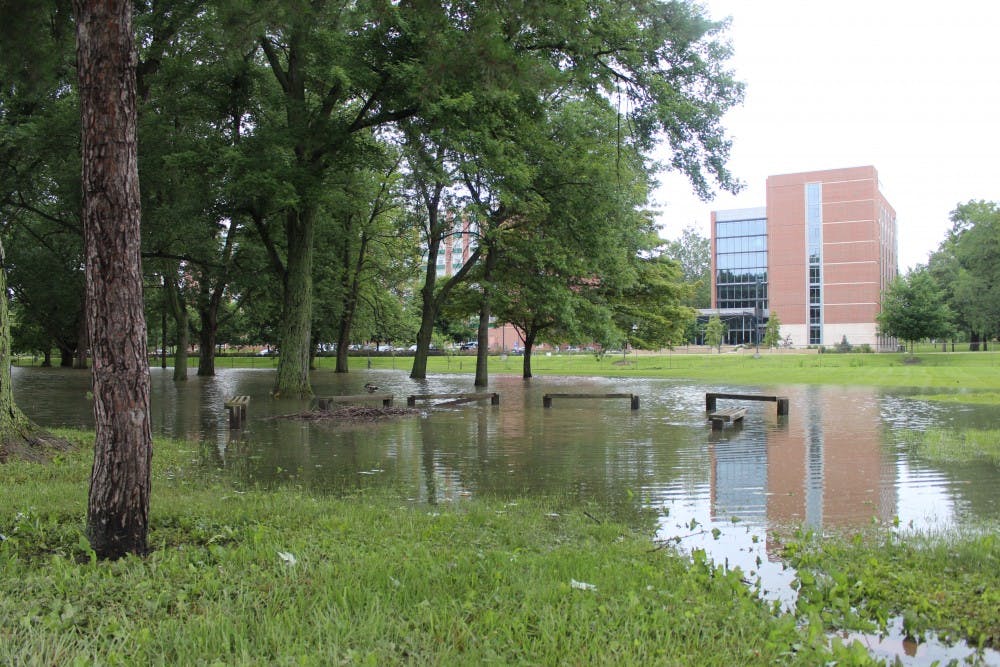Ball State is continuing its efforts to eliminate the flooding that plagues parts of campus. Areas off of campus, however, are still dealing with problems of their own after the first weeks of the spring semester brought significant amounts of rain.
Flooding has been a reoccurring issue on campus over the years, and even now, parking lots and roads can be rendered temporarily unusable by flooding.
Parking lots near Lucina Hall and West Quad are some of those frequent locations of flooding. Jim Lowe, associate vice president for facilities planning and management, said a storm water system exists along University Avenue, but the system is currently limited in its capacity.
Though pumps are used to divert some flow toward Riverside Avenue, Lowe said plans are in place to improve the system in the future.
“Our plan is to either increase the size of the pumps, determine how to gravity flow water from these parking lots to the north or a combination of both,” Lowe said in an email. “We plan to complete this work during the summer of 2017.”
The problems go far beyond campus, though. Madeline May, a senior telecommunications major, lives on Riverside Avenue, and while flooding is not a problem in the apartment building where she lives, she said flooding around campus has been an issue since her freshman year.
“We get half an inch of rain, and it’s a river,” May said. “I made it a priority in the first week to go get rain boots.”
Away from campus, the problems can be even worse, to the point where students have to walk on the road at some locations to make it to class.
“Our sidewalks are so crumbling apart in places … they just create these mud puddles,” May said.
At some points, the water creates issues on the road, too.
“I’ve seen a lot of cars coming by … just spraying everybody,” May said.
Another area marked for improvement is one road near the Amelia T. Wood Health Center that has been closed off to vehicles on multiple occasions after storms. Lowe said the problems there stem from leaves, sticks, mulch and other debris that wash into the lone basin there, blocking the flow of water.
“Our plan is to augment this inlet/outlet by perhaps adding another inlet at a slightly higher point that could provide relief when the lower inlet/outlet becomes clogged,” Lowe said. “I plan to complete this work during the summer of 2017.”





